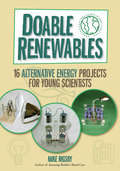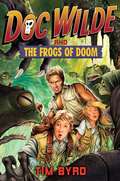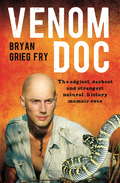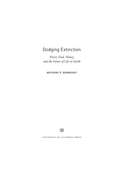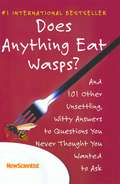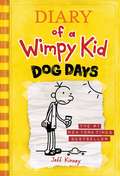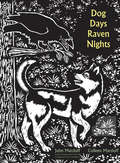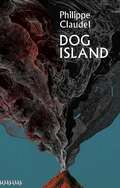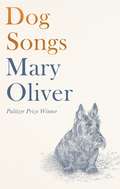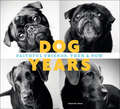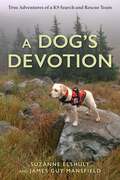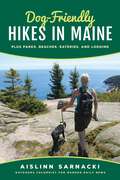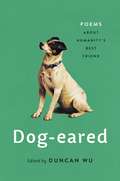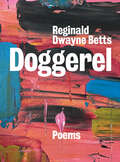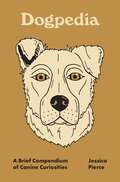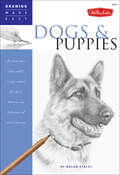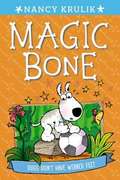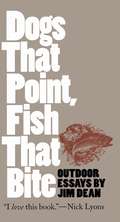- Table View
- List View
Do-It-Yourself Gun Repair: Gunsmithing at Home
by Edward A. MatunasDiagnose and repair a broad selection of popular hunting firearms in the convenience of your home workshop and save money, too. Do-It-Yourself Gun Repair is an authoritative guide to maintaining, repairing, and improving rifles, shotguns, and handguns. Many of the repairs professional gunsmiths make involve replacing broken or worn parts, and you'll learn to identify and correct these common problems quickly, safely, and easily by following the detailed instructions and illustrations of gunsmithing expert Edward A. Matunas.Matunas teaches the home gunsmith a wide variety of repairs with easy-to-understand directions and solid, step-by-step advice based on his many years of professional gunsmithing. Topics include: Hand and power tool suggestions for home gunsmithing Replacing firing pins, extractors, and ejectors Analyzing and correcting accuracy problems Top-notch information about bedding the barrel and bore Easy installation of scopes, mounts, sights, and recoil pads Repair of splits and cracks in stocks Avoiding common mistakes and time-consuming double workA unique feature of this book is a section covering disassembly, repair, and reassembly of seven of the most popular firearms: Remington 700, Remington 1100, Remington 870, Winchester 94, Savage 110, Marlin 336, and Marlin 70. The instructions are fully illustrated with photos and drawings as well as exploded views and parts lists, and much of this information can be applied to other guns with similar actions.
Doable Renewables: 16 Alternative Energy Projects for Young Scientists
by Mike RigsbyKids will learn valuable hands-on lessons from this guide by constructing working models that generate renewable, alternative energy. Budding scientists learn how to build their own Kelvin water-drop generator out of six recycled cans and alligator-clip jumpers; a solar-powered seesaw from a large dial thermometer and a magnifying glass; and a windmill from eight yardsticks, PVC pipe, cardboard, and a converter generator. Children will investigate the energy-generating properties of a solar cell, a radiometer, a Nitinol heat engine, and a Peltier cell--there are even plans to build a human-powered desk lamp. Each project includes a materials and tools list as well as online information on where to find specialized components.
Doc Wilde and the Frogs of Doom
by Tim ByrdThere is never a dull moment when it comes to Doc Wilde and his family of swashbuckling explorers. Brian and Wren have been trained from an early age to keep up with their world famous father. With their driver Declan mac Coul and their butler Phineas Bartlett in tow, there is no obstacle they can't overcome, no evil they can't defeat, including mutant frogs from another dimension. With an over-the-top nod to classic pulp adventure series, Tim Byrd has created a rip-roaring ride. Buckle your seat belt, and hold on tight!
Doctor Venom
by Bryan Grieg FryMeet venomologist Bryan Grieg Fry, the man with one of the most dangerous job in Australia - working with the world's most deadly creatures.Welcome to the strange and dangerous world of Doctor Venom.Imagine a first date involving three weeks in Siberia catching venomous water shrews, and later a wedding attended by Eastern European prime ministers and their bodyguards wielding machine guns. Then a life of living and working with snakes. Lots of very, very poisonous snakes and other venomous creatures ... everything from the Malaysian king cobra to deadly scorpions.In this action-packed ride through Bryan Grieg Fry's life you'll meet the man who's worked with the world's most venomous creatures in over 50 countries. He's been bitten by 26 poisonous snakes and three stingrays - and, while deep in the Amazon jungle, survived a near-fatal scorpion sting. He's also broken 23 bones, including breaking his back in three places, and had to learn how to walk again. He only works on venom that he has collected himself - so the adventures, and danger, will just keep coming...Bryan now divides his time between scientific research and teaching at the University of Queensland, and TV filming and collecting expeditions around the world.
Dodging Extinction
by Dr Anthony D. BarnoskyPaleobiologist Anthony D. Barnosky weaves together evidence from the deep past and the present to alert us to the looming Sixth Mass Extinction and to offer a practical, hopeful plan for avoiding it. Writing from the front lines of extinction research, Barnosky tells the overarching story of geologic and evolutionary history and how it informs the way humans inhabit, exploit, and impact Earth today. He presents compelling evidence that unless we rethink how we generate the power we use to run our global ecosystem, where we get our food, and how we make our money, we will trigger what would be the sixth great extinction on Earth, with dire consequences. Optimistic that we can change this ominous forecast if we act now, Barnosky provides clear-cut strategies to guide the planet away from global catastrophe. In many instances the necessary technology and know-how already exist and are being applied to crucial issues around human-caused climate change, feeding the world's growing population, and exploiting natural resources. Deeply informed yet accessibly written, Dodging Extinction is nothing short of a guidebook for saving the planet.
Does Anything Eat Wasps?
by New ScientistHow fat do you have to be to become bulletproof? Why do people have eyebrows? Why do pineapples have spines? How much does a head weigh? What affects the color of earwax? How quickly could I turn into a fossil?Have you ever thought up a question so completely off-the-wall, so seemingly ridiculous, that you couldn't even find the courage to ask it? Maybe at the sports bar you were transported by the beauty of your beer to wonder, "How long could I live on beer alone?" Or, cycling through the park, you mused, "Did nature invent any wheels?" Or looking up at the night sky, you had a moment of angst, "What would happen if the moon suddenly disappeared-- if it were vaporized or stolen by aliens?" Full of fun factlets,Does Anything Eat Wasps? is a runaway bestseller around the world. It celebrates the weird and wacky questions -- some trivial, some baffling, all unique -- and their multiple answers culled from "The Last Word," a long-running column in the internationally popular science magazine, New Scientist. Tackling the imponderables of everyday life, sparkling with humor, and bursting with delightful erudition, Does Anything Eat Wasps?i s irresistibly entertaining and utterly engrossing. So, go on. Put away your lab coat and your pencil -- science is fun again.
Dog Blessings: Poems, Prose, and Prayers Celebrating Our Relationship with Dogs
by June Cotner“Delightful . . . filled with accounts of the many magical moments these dear companions provide . . . and their impact on our days and our doings..” —Spirituality & PracticeFeaturing heartwarming passages by a renowned inspirational author, this gift book celebrates puppy joy, the “welcome home” wag of the tail, unbridled affection, bittersweet love for an aging pet, and the sublime moments shared between humans and their canine companions.“My dogs are my life. Let this book be a great part of yours..” —Doris Day, actress and founder of the Doris Day Animal Foundation“A moving and tender book of poems, prose, and prayers that gracefully honors our dog companions. Page after page, I found my heart opening even more to the deep love I share with dogs and how much they mean to me. You’ll laugh, you’ll cry, and you’ll call your dog over for a full-body hug. I heartily recommend this book to dog lovers everywhere!.” —Marty Becker, DVM, resident veterinarian on ABC’s Good Morning America“Anyone who lives with dogs knows how special they are and how much they affect our lives on a daily basis . . . In this anthology of poems, prayers and prose by famous and lesser-known writers, Cotner has gathered words that convey the sacred connection dogs and their humans have with each other..” —Best Friends Magazine
Dog Days (Diary of a Wimpy Kid #4)
by Jeff KinneyKinney's "New York Times"-bestselling Wimpy Kid series returns with Book 4, which finds the sarcastic and sharp-witted ("Toronto Globe and Mail") Greg on summer vacation with his family.
Dog Days, Raven Nights
by John M. Marzluff Colleen MarzluffTwenty years ago, fresh out of graduate school and recently married, John and Colleen Marzluff left Arizona for a small cabin in the mountains of western Maine. Their mission: to conduct the first-ever extensive study of the winter ecology of the Common Raven under the tutelage of biologist Bernd Heinrich. Drawing on field notes and personal diaries, they vividly and eloquently chronicle their three-year endeavor to research a mysterious and often misunderstood bird--assembling a gigantic aviary, climbing sentry trees, building bird blinds in the forest, capturing and sustaining 300 ravens as study subjects, and enduring harsh Maine winters in pursuit of their goal. They also shared the unique challenges and joys of raising, training, and racing the sled dogs that assisted them in their work. Accompanied by Evon Zerbetz's lovely linocut illustrations, Dog Days, Raven Nightsis a fascinating, behind-the-scenes look at the adventures of field science and an insightful exploration of the nature of relationships, both animal and human.
Dog Island
by Philippe ClaudelFrom the author of Grey Souls and Brodeck's Report: a chilling island fable of murder, exploitation and complicity"A timely and elegant examination of the migrant situation in the Mediterranean from the point of view of a remote, volcanic island" The New European BOOKS OF THE YEARThe Dog Islands are a small, isolated cluster of islands in the Mediterranean - so called because together, when viewed from above, they form the shape of a dog, twisting and baring its teeth against a brilliant blue sea. One of the only inhabited islands (the one that takes the place of one of the dog's teeth) is dominated by a gently smoking volcano, fringed by black volcanic beaches and under the iron rule of the heads of community who are loath to let any outside influence disrupt the quiet way of life on the island.Then one morning, an old woman comes across three bodies that have washed up with the tide: three young black men, who have apparently drowned in their attempt to cross the sea. The initial reaction of the island community is that this tragedy must be covered up, lest any association with the drownings damages the island's tourism industry . . .But the island's deliberate isolation from the realities of the world cannot last for long, and when a visiting detective arrives on the island and starts asking awkward questions, it becomes clear that the deaths of these three men indicate something far more sinister and deeply rotten lying at the heart of this godforsaken fragment of sea-bound land.Translated from the French by Euan CameronWith the support of the Creative Europe Programme of the European Union
Dog Photography For Dummies
by Kim Rodgers Sarah SypniewskiTips and tricks for capturing your canine's personality with every click of the camera Simply snapping a picture may not capture the playfulness or spontaneity of a dog. Knowing what kind of equipment, angle, and composition to use while photographing a dog can make all the difference in the character captured in the photo. Dog Photography For Dummies gives you practical and fun guidance for capturing your dog's personality and turning ordinary shots into priceless memories that will last a lifetime. Covering all the latest and greatest gadgets and accessories available to capture and alter photos of your favorite pooch, Dog Photography For Dummies offers techniques that amateurs and intermediates alike can use to improve their photography skills. This hands-on guide features great examples of dog portraiture, plus tons of ideas for fun new places to pose your furry friend, such as the beach, the park, the car, in the snow, and more. Detailed discussions of color versus black-and-white, indoors versus outdoors, composition, and capturing movement Advice on how to get a dog to sit still Considerations for photographing a shy dog who is scared of the camera Guidance on making the most of natural light Tips for photographing dogs with black (or dark) coats How to photograph people and dogs together Whether for decorating, memories, or holiday cards, Dog Photography For Dummies makes it easy to capture the best of your four-legged friend.
Dog Poems
by Christopher Wait and LeonoraThis handsome gift edition will appeal to anyone who is a dog lover, or a poet, or a poetry lover: in short, just about anyone Our canine companions offer us friendship, love, understanding, all unadulterated. They are our joyful playmates and our furry shoulders to cry on, from the cradle to the grave. This book brings together some of the finest poems on dogs by a range of poets from Diogenes to Dorothy Parker, from Chaucer to Clarice Lispector. Gertrude Stein once said, “I am I because my little dog knows me,” and this collection proves it: with their wit, their wisdom, and their delights, these poems—and the dogs that inspired them—hold up a mirror to our better selves. Whether exploding with the joy of a new puppy or mourning the loss of a tender lifelong friend, growling a critique at the more “civilized” habits of humans or simply spending a day in the life of a favorite pet, these poems offer something to dog lovers, poets, and poetry readers: in short, just about everyone.
Dog Shaming
by Pascale LemireBased on the runaway web phenomenon (www.dogshaming.com), Dog Shaming features the most hilarious, most shameful, and never-before-seen doggie misdeeds. Our dogs are our best friends. They are always happy to see us. They comfort us in our times of need. They also eat our shoes, stain our carpets, and embarrass us in front of our guests. Dog owners everywhere have found their outlet in Dog Shaming, where they can confess their dogs' biggest (and often grossest!) sins, which turn out to be recognizably universal--complete with snapshots of ridiculously cute but shamed pups who don't seem capable of humping humans, pooping on pillows, or snagging steak straight from a grill.So share in the shaming and laugh through your frustration as Dog Shaming reminds us that unconditional love goes both ways.From the Trade Paperback edition.
Dog Songs: Poems
by Mary Oliver'The popularity of [Dog Songs] feels as inevitable and welcome as a wagging tail upon homecoming' Boston GlobeIn Dog Songs, Mary Oliver celebrates the special bond between human and dog, as understood through her connection to the dogs who across the years accompanied her on her daily walks, warmed her home and inspired her work. The poems in Dog Songs begin in the small everyday moments familiar to all dog lovers and become, through her extraordinary vision, meditations on the world and our place in it.Dog Songs includes visits with old friends, like Oliver's most beloved dog Percy, and introduces still others in poems of love and laughter, heartbreak and grief. Throughout, the many dogs of Oliver's life merge as fellow travelers and as guides, uniquely able to open our eyes to the lessons of the moment and the joys of nature and connection.
Dog Years: Faithful Friends, Then & Now
by Amanda JonesThe photographer behind Unleashed combines man’s best friend with time in this touching portrait collection capturing dogs as puppies and as older dogs.Dog Years is a heartwarming look at the lives and stories of thirty dogs. By presenting portraits of each dog as a puppy and again as an older dog, photographer Amanda Jones reveals the unique spark of personality that lasts a lifetime. These beautiful images of breeds ranging from golden retrievers and Great Danes to pugs and French bulldogs are accompanied by reflections from loved ones on the lives they share with their furry companions. The result is a celebration of each dog and a tribute to the relationships we share with our four-legged friends.
Dog's Devotion: True Adventures of a K9 Search and Rescue Team
by Suzanne Elshult James Guy MansfieldIn late March of 2014, death descended upon the community of Oso, Washington, in the form of a massive landslide. Ten million cubic yards of dirt and mud crashed through homes, sweeping a 20-foot-high wall of debris before it and scouring the valley floor. In the cold rain of that morning, an entire community disappeared in a sea of mud. In the desperate hours that followed, rescue crews were able to pull only eight survivors out of the wrecked landscape. And then all became quiet, with the stunned realization that many more people were missing, but none were still living.This is the moment when the story of A Dog's Devotion begins. The emergency call from Oso went out and was answered by K9 Search and Rescue (SAR) teams from across the Pacific Northwest. Suzanne, along with her four-year-old Labrador Retriever, Keb, and her teammate Guy, was one of the SAR teams to respond to this disaster. In this book, readers immediately find themselves on the ground in the cold mud of the Oso Landslide Disaster on the desperate search for the remains of over forty lost souls. In subsequent chapters, readers will accompany Suzanne, Guy, and Keb as they are inserted by helicopter to search high snowfields on Mount Rainier or as they traverse steep, forested slopes searching for the clandestine grave of murder victims. They&’ll join K9 Keb as her keen nose leads to human remains in the forests of Washington State and as far away as the woods of Scandinavia. Keb&’s story is of a dedicated K9 who can distinguish the scent of the dead from the scent of the living, and who can detect buried bones and even corpses underwater. Readers will follow this intrepid K9 and her teammates as they face the challenges of changeable weather, deep northwest forests, high mountain slopes, and menacing coyotes to find dead bodies, missing hikers, and even the bones of murder victims from long ago. Among their successes: finding multiple victims buried by the 2014 Oso Landslide, solving the mysterious disappearance of women in wealthy suburbs, and finding human bones thought to be forever lost to time. It&’s their story about evolving as search and rescue volunteers while overcoming harsh conditions, inner demons, a rust-bound bureaucracy, and back-stabbing teammates. While internal conflicts threaten their larger K9 team, Keb&’s training, loyalty, and perseverance inspire them and help them find the resolve to carry on their service to the community.
Dog-Friendly Hikes in Maine: Plus Parks, Beaches, Eateries, and Lodging
by Aislinn SarnackiToday, more and more people travel with their pets, taking their beloved four-legged friends everywhere. Yet, it can still be sometimes difficult to find a park or hiking trail that's dog-friendly. Bangor Daily News outdoors columnist Aislinn Sarnacki presents 35 hikes around Maine that you can feel comfortable taking your dog on. Along with maps and color photos to detail the hikes, she includes practical information such as proper etiquette to observe with your canine companion and when it's okay to let your pet off the leash. She also rounds out with helpful suggestions on dog-friendly restaurants, hotels, parks, and beaches, so you and your furry friend can make the most of your time in the Maine outdoors.
Dog-eared: Poems About Humanity's Best Friend
by Duncan WuFrom Homer to Wordsworth to Gwendolyn Brooks, learn about history's greatest writers and the furry best friends that inspired them.Dogs are at once among the most ordinary of animals and the most beloved by mankind. But what we may not realize is that for as long as we have loved dogs, our poets have been seriously engaged with them as well.In this collection, English professor Duncan Wu digs into the wealth of poetry about our furry friends to show how varied and intimate our relationships with them have been over the centuries. Homer recounts how Odysseus's loyal dog recognizes his master even after his long absence. Thomas Hardy wrote poems from a pooch's perspective, conveying a powerful sense of dogs' innocent and trusting nature. And a multitude of writers, from Lord Byron to Emily Dickinson, have turned to poetry to mourn the loss of beloved dogs. Rich and inviting, Dog-eared is a spellbinding collection of poetic musings about humans and dogs and what they mean to each other.
DogJoy: The Happiest Dogs in the Universe
by Editors of Bark<p>There is no greater joy than seeing a beloved dog smile. <p>Whether they're greeting us at the door, romping with their pals, or celebrating a birthday, their happiness is completely infectious. Do dogs really smile? <p>We set out to prove this idea after a reader of The Bark sent in a photo of her grinning dog, with a suggestion for a contest ... and, the Smiling Dog contest was born. <p>So for the past eight years, enthusiastic dog lovers everywhere have been sending in photographs of their smiling pups. DogJoy assembles the best of the pack—presenting proof positive that dogs not only smile, but also laugh, grin, snicker and even share jokes. <p>Highlighted by personal stories and peppered with charming observations, dog lovers everywhere will adore this wonderful collection.
Doggerel: Poems
by Reginald Dwayne BettsDoggerel is a revelatory meditation on Blackness, masculinity, and vulnerability from one of poetry’s boldest voices. Reginald Dwayne Betts is our foremost chronicler of the ways prison shapes and transforms American life. In Doggerel, Betts examines this subject through a more prosaic—but equally rich—lens: dogs. He reminds us that, as our lives are broken and put back together, the only witness often barks instead of talks. In these poems, which touch on companionship in its many forms, Betts seamlessly and skillfully deploys the pantoum, ghazal, and canzone, in conversation with artists such as Freddie Gibbs and Lil Wayne. Simultaneously philosophical and playful, Doggerel is a meditation on family, falling in love, friendship, and those who accompany us on our walk through life. Balancing political critique with personal experience, Betts once again shows us “how poems can be enlisted to radically disrupt narrative” (Dan Chiasson, The New Yorker)—and, in doing so, reveals the world anew. “. . . every story becomes a multiplication, If the naming is filled less with names than With the best parts, the barking & everything Else, because who among us hasn’t been As mangy as a rescue, even on our best Days, desiring mostly to be loved.” —from “Rings”
Dogpedia: A Brief Compendium of Canine Curiosities (Pedia Books #9)
by Jessica PierceAn enchanting, fact-filled treasury for the dog lover in all of us, from A to ZDogpedia is your gateway into the astonishing world of dogs. Featuring dozens of alphabetical entries on topics ranging from the wonders of dog evolution to the intricate ways dogs communicate with humans and each other, this enticing, pocket-friendly collection helps you to see dogs with new eyes and celebrate the amazing tapestry of our shared existence.Explore the remarkable interplay between humans and dogs with every turn of the page and discover how dogs have played starring roles in history, literature, and art. Immerse yourself in fun facts about dog biology and behavior, from appeasement signals and barking to counter surfing, dominance, growling, scent marking, and zoomies. Learn what fossilized poop can tell us about the history of dog domestication, how dogs in Siberia evolved adaptations to help them thrive in a frigid climate, how dogs have been weaponized for war and colonization, and why we refer to dogs as curs, mutts, and hounds. Meet famous dogs such as Argos, Balto, Boji, and Laika, and marvel at the interwoven destinies of our species and the profound impact dogs have had on our evolution, culture, and everyday lives.With captivating drawings that bring the entries to life, Dogpedia uncovers the enigma of dogs, revealing hidden treasures behind every wagging tail.Features a cloth cover with an elaborate foil-stamped design
Dogs & Puppies: Discover Your Inner Artist As You Explore The Basic Theories And Techniques Of Pencil Drawing (Drawing Made Easy)
by Nolon StaceyAn easy-to-follow guide to drawing canines, from sketching bodies, faces and hair to creating animal portraits of a favorite pet.Many aspiring artists want to draw a portrait of their best friend—especially where their pal has four paws and fur! This newest addition to the Drawing Made Easy series pairs our best-selling medium with the wildly popular subject of dogs and puppies. Unlike similar titles on the market, this book doesn’t simply provide a collection of dogs for artists to re-create exactly. Instead, the book focuses on techniques specific to drawing accurate depictions of dogs and puppies—from creating a variety of fur types and features to achieving accurate proportions—so that artists can use the knowledge to render their own canine portraits. The book also includes a series of easy-to-follow, step-by-step projects showcasing a range of dog breeds, poses and props. This allows artists to practice their developing skills, guiding them from simple sketches through the study of various techniques to polished renderings.
Dogs Don't Have Webbed Feet #7
by Nancy Krulik Sebastien BraunWith one bite of his magic bone, Sparky lands in the Amazon Rain Forest in Brazil among biting bugs and dogs with . . . webbed feet!? The Bush Dogs declare him their new leader when he saves their home from the metal machines that threaten to destroy the jungle. In fact, the machines have flattened so many other trees that Sparky can't find where he buried his bone! Will Sparky ever be able to find his way home?
Dogs Don't Wear Sneakers
by Laura Joffe NumeroffThis is a poetry book that explains what would happen if different animals learned how to play sports, teach school and shaved like people do.
Dogs That Point, Fish That Bite
by Jim DeanJim Dean, longtime editor of Wildlife in North Carolina, offers his personal observations on the pleasures and frustrations of hunting, fishing, camping, and other outdoor pursuits. Dogs That Point, Fish That Bite draws together fifty of the best columns that Dean has written for the magazine over the last seventeen years. The witty, sometimes poignant pieces are arranged into a loose chronicle of the sporting year, with a generous allowance for digression: the first is set in April, on the opening day of trout season, and the last tells of a New Year's Day spent alone in a mountain cabin. At first glance, hunting and fishing are the focus of most of the columns. Often, however, Dean is after bigger game. A crab that escapes the pot leads him to reflect on the capricious nature of life. The restoration of a cabin at the old family farm evokes memories of family and simpler times. And a May panfishing trip takes on the quality of ritual, performed by two old friends. The consistent theme uniting all the essays is the celebration of wild places and rural traditions that have become endangered in our modern world."Earthy, intimate, brilliant, and always wise, these outdoor essays spring from the heart and mind of a replete hunter and fisherman. Jim Dean is among the top few writer-sportsmen in America--and I love this book.--Nick Lyons, author of Confessions of a Fly-Fishing Addict "Jim Dean brings you his outdoors with long experience, pleasant sentiment and unforgettable wry humor. His hunting, fishing and camping life may have centered in his beloved North Carolina but his pilgrimages to other fields and waters have spiced his stories with memorable comparisons. His book will last.--Charles F. Waterman, author of Black Bass and the Fly Rod Jim Dean, longtime editor of Wildlife in North Carolina, shares his personal observations on the pleasures and frustrations of hunting, fishing, camping, and other outdoor pursuits in this gem of a book. Dogs That Point, Fish That Bite draws together fifty of Dean's best essays, arranged into a loose chronicle of the sporting year--from the opening day of trout season to a New Year's Day spent alone in a mountain cabin. A witty and sometimes poignant collection, it celebrates the wild places and rural traditions that have become endangered in our modern world.-->

